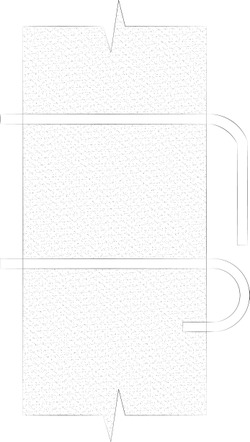First attempt at the response poster output. This shows the initial concept ideas and how it developed from the analysis of the ruin in its current state to what the Bombed-Out church could eventually become. Precedent such as the Angkor Wat ruins in Cambodia were used to help envision the church becoming a small ecosystem in the Liverpool City Centre. Diagrams show the explosion of nature and how this contrasts to the original WW2 Blitz which destroyed the church. "Man-made destruction takes life while Organic destruction restore it".
Posted 22 May 2015 16:30
Grey Render of the St. Luke's 3 Dimensional Model.
Posted 22 May 2015 15:15
Finished Section of Design Proposal with Digital Hook Detail. The hooks are used to assist the growth of vines on the existing ruin. The Section also feature the plant pots designed to also assist nature to overwhelm the site. Sand Stone benches have been designed to blend in with the ruin but allow for seating during the annual War Memorial ceremony that will take place on the site. The final design emphasises the decay of the bombed out church whilst also celebrating the explosion of plants, birds and an inner-city ecosystem.
Posted 22 May 2015 14:53
Digital Hook Detail. The steel hooks are used to assist the creepers and other plants attaching to the sandstone walls of the existing ruin.
Posted 22 May 2015 14:12
Night time section of St. Luke's Church.
Posted 22 May 2015 01:56
Section of Existing St. Luke's Bombed Out Church. WIP
Posted 22 May 2015 00:09
3-Dimensional Model of the Bombed Out Church (WIP).
Posted 18 May 2015 11:42
Design Concept: Organic Destruction versus Anthropic Destruction. This image was created to sum up the design concept that was forming at the early stages of the project. It features the poppy flower which is a symbol of sleep, peace and death as well as the symbol of Remembrance Day in the Western World. In Classical Mythology, the bright scarlet color signifies a promise of resurrection after death. This linked well with the idea of resurrecting the ruin with the use of life and nature. This concept developed further to include an annual war memorial day which would take place on the site around early spring during the celebration of VE Day.
Posted 14 May 2015 13:31







